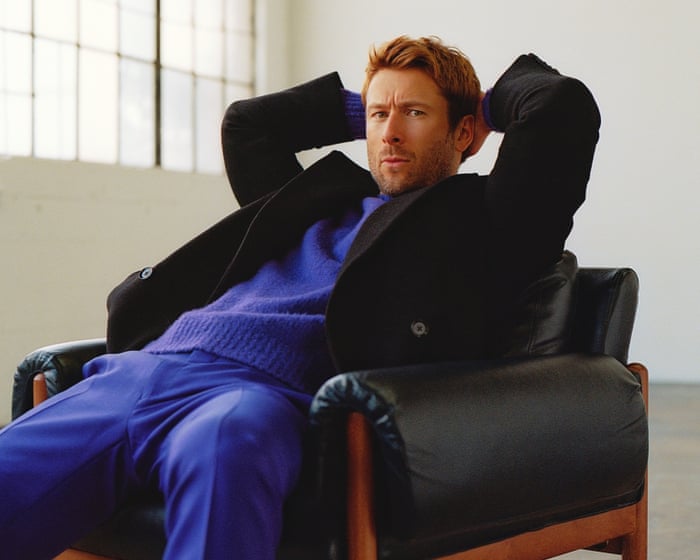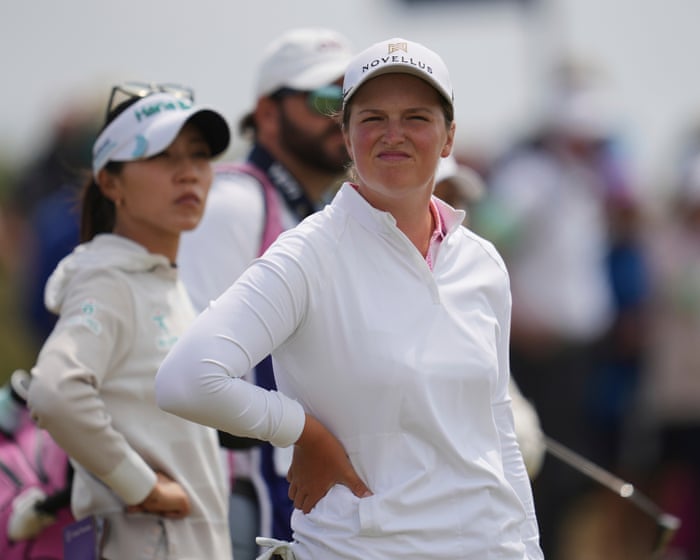On a hot Saturday afternoon at Glastonbury, while many are nursing halfway-point hangovers, the Dublin garage punk band Sprints stir up a jubilant mosh pit with their charged song “Descartes,” Irish tricolour flags waving above them. As summer continues, at Japan’s Fuji Rock Festival, new songs from Galway indie act NewDad captivate the audience. Travy, a Nigerian-born rapper raised in Tallaght, creates a mixtape infused with his Dublin accent, following the first Irish rap album to top the Irish charts. Efé moves beyond Dublin bedroom pop to sign with the US label Fader, and on “Later… With Jools Holland,” George Houston performs the haunting “Lilith”—a tribute to political protest singers everywhere—in a distinctive Donegal accent.
From Melbourne to Mexico City, crowds still shout along to the opening string loop of Fontaines DC’s “Starburster,” and CMAT’s viral “woke macarena” dance to her hit “Take a Sexy Picture of Me” spreads through festival mosh pits and TikTok. You might have also heard of Kneecap.
Ireland has always had its share of punks, ravers, and major indie acts like the Cranberries, Ash, or Bicep, but it’s never had an alternative music scene as strong or diverse as today’s. Lankum, Gilla Band, Pillow Queens, For Those I Love, John Francis Flynn, and Chalk are among the other acclaimed artists, alongside a thriving underground rap scene. This success is now redefining what “Irish music” means, opening doors for musicians once excluded from the country’s cultural conversation.
“It’s been an Irish renaissance,” says Karla Chubb, singer and guitarist of Sprints. The group is currently on a UK tour, with US shows planned for next year, and they are the first Irish band signed to US indie label Sub Pop. She points to Fontaines DC and CMAT as “a blueprint” for achieving international success. “As a Dublin band, you once would have hoped to play Vicar Street,” a mid-sized venue. “Now we have the drive to aim bigger.” Music, she notes, is no longer an “unpaid internship.”
Uniting today’s artists is a spirit of rebellion, sharp wit, and vulnerable lyrics, with recurring themes of solidarity and marginalization. These are created by a youth still emerging from the Troubles and the legacy of the Celtic Tiger—the Irish property boom, 2008 crash, and subsequent recession. Sprints displayed a banner for trans rights during their Glastonbury set, while Dundalk band the Mary Wallopers had their performance at Portsmouth’s Victorious festival cut short after expressing support for Palestine. Irish Artists for Palestine recently organized an Irish tour for the all-women Palestinian choir Daughters of Jerusalem. “This understanding of oppression and colonialism we have is generational,” says Dan Hoff of Dublin five-piece Gurriers.
Sprints’ second album, released in September, is “inspired by the contrast of finally realizing our dreams and making music full-time, against the backdrop of the homeless crisis in Ireland, the war in Gaza, and the cost of living,” explains Chubb. “These are issues across Europe, so on an international stage, we’re highlighting a shared struggle.”
“The songs are written about Ireland, but I wanted to write them with a universal understanding,” says Hoff. His band Gurriers released their debut album “Come and See” in 2024, supported Fontaines DC, and landed a track on EA Sports FC 26. The band is troubled by the rise of the far right in Ireland and beyond; their protest song “Approachable” is written from the perspective of an online right-wing provocateur, while “Dipping Out” addresses Irish emigration but expands, Hoff says, “like an Adam Curtis documentary, critiquing the zeitgeist.”
“People feel isolated andPeople show up for us. I never imagined that a band started by a group of teenagers in Galway would one day perform on a major stage in Japan.
Everyone I talk to has another artist to get excited about, whether it’s dream-pop band and Cure support act Just Mustard, folk collective Madra Salach, ambient artist Saoirse Miller, or alternative rapper Khakikid. “We’re so proud of ourselves,” Dawson says. “Which is tough to admit as an Irish person.”
Frequently Asked Questions
Of course Here is a list of FAQs about how Ireland built a worldclass alternative music scene by breaking from tradition with clear and concise answers
Beginner Foundational Questions
1 What exactly is alternative music
Its a broad term for music that exists outside of the mainstream pop charts It often prioritizes artistic expression experimentation and raw emotion over commercial appeal
2 How was Irelands music scene traditionally viewed
For a long time it was dominated by its rich heritage of traditional Irish folk music and later mainstream pop and rock acts
3 What was the key moment Ireland started to break free
While it was a gradual process the 1980s were pivotal Bands like U2 The Pogues and most importantly the independent label Rough Trades support of Irish postpunk bands showed that music didnt have to be traditionally Irish to be successful
4 Who are some of the biggest names from this alternative scene
Internationally renowned acts include U2 Sinéad OConnor The Cranberries My Bloody Valentine and more recently Fontaines DC The Murder Capital and SOAK
How Why It Happened
5 Why did Irish artists start moving away from tradition
They wanted to express their own modern identities and frustrations The social and political climate particularly The Troubles in the North fueled a need for raw honest and often angry music that traditional forms didnt accommodate
6 How did Irish culture contribute to this new sound
The Irish tradition of storytelling never went awayit just transformed Modern Irish alternative music is known for its powerful poetic and narrativedriven lyrics even over loud distorted guitars
7 Was there a specific city where this all started
Dublin has always been the epicenter acting as a hub where musicians could meet form bands and play in a growing number of small supportive venues Belfast also had a fiercely independent and influential scene
8 Did the government or any institutions help
Yes organizations like the




